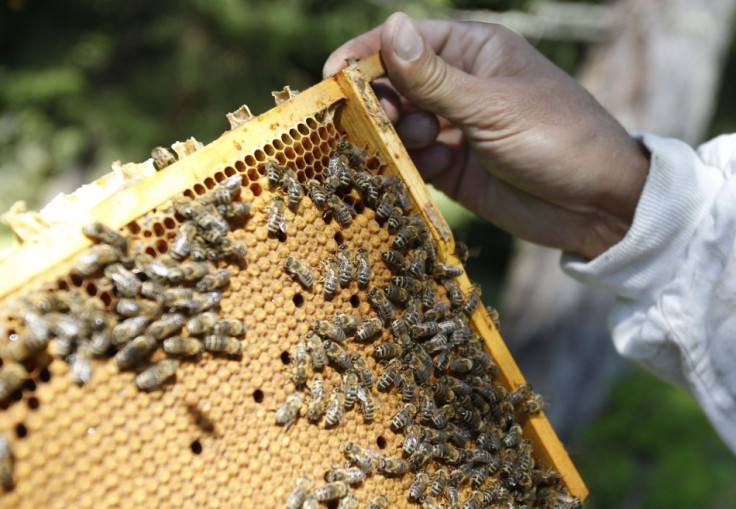Mysterious Bee Blights Could Lead to Food Crops Catastrophe

Honeybees are mysteriously dying around the world, according to a new study from the American Society of Microbiology.
A large proportion of the infected bees have been hit by colony collapse disorder (CCD), which remains mostly unexplained, but could have a disasterous impact on the food chain in the coming years.
According to the paper published in American Society of Microbiology's online journal mBio, bees have died at more than twice the usual rate since CCD was identified seven years ago.
Scientists have attributed the large-scale bee deaths to a number of factors, including pesticides, deadly parasites, and loss of habitat.
The new report was compiled by bee researchers from Beltsville Agricultural Research Centre in US and Academy of Agricultural Sciences in China, and suggests that a plant virus may be attributing to the dwindling bee populations.
Researchers have long suspected a host of viruses and parasites to be causing the thinning of colonies.
But the new study found that the tobacco ring-spot virus (TRSV), earlier only known to afflict plants, might also be responsible for the low rates of bee survival in recent years, besides other strains of bee viruses, such as Israeli paralytic virus (IASV).
However, the viruses are not the only sole perpetrators of causalities in bees. Varroa mites appear to be playing their part in the pervasive bee-demise, as well.
The researchers found that the TRSV virus is also present in Varroa mites, which derive their nutrition by sucking the blood of bees, thus serving to spread the pathogens among the bees on large scale.
The mites also weaken the honeybees, making them vulnerable to other pathogens such as IASV and TRSV, or to nutritional deficits caused by diminishing open habitats for the bees.
TRSV, one of the pathogens thought to be behind the world-wide bee deaths, is an RNA virus, which like the human-immunodeficiency virus (HIV) mutates rapidly and evades hosts' immune system.
The rapidly-mutating plant virus has now penetrated the species barrier from tobacco and soybean plants to infect the bees, also via the pollen collected from different flowers.
About 5% of known plant viruses are transmitted via pollens, the study said.
In US, a third of the commercial population of bees was wiped out by CCD since 2006, which has affected the multibillion-dollar agricultural industry, according to the same report.
Honeybee population has also sharply declined in UK over the past years. A study published in PLoS One, led by Professor Simon Potts at University of Reading, says that the country faces a deficit of about 25% bee population required to pollinate the nation's crops.
The study surveyed 41 European countries, and UK was found to have the second-lowest population density of bees, which has raised concerns about the nation's long-term food security.
Europe is short of about 13 million honeybee colonies to pollinate the crops on the continent, which is roughly equivalent to 7 billion bees.
"We face a catastrophe in future years unless we act now," Potts told the Guardian.
"Wild pollinators need greater protection. They are the unsung heroes of the countryside, providing a critical link in the food chain for humans and doing work for free that would otherwise cost British farmers £1.8bn to replace."
© Copyright IBTimes 2025. All rights reserved.





















